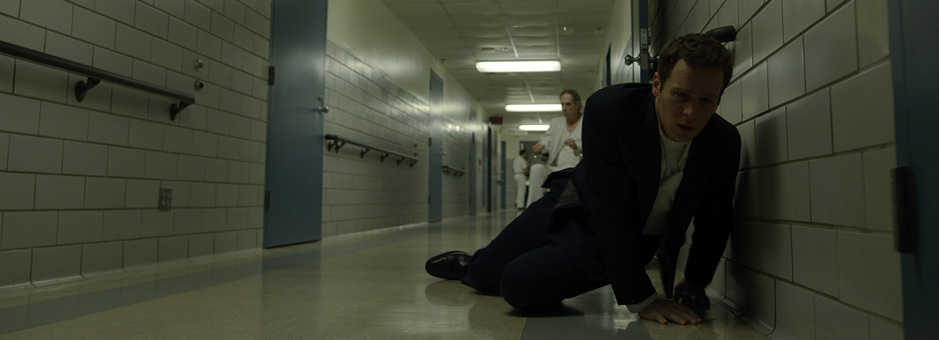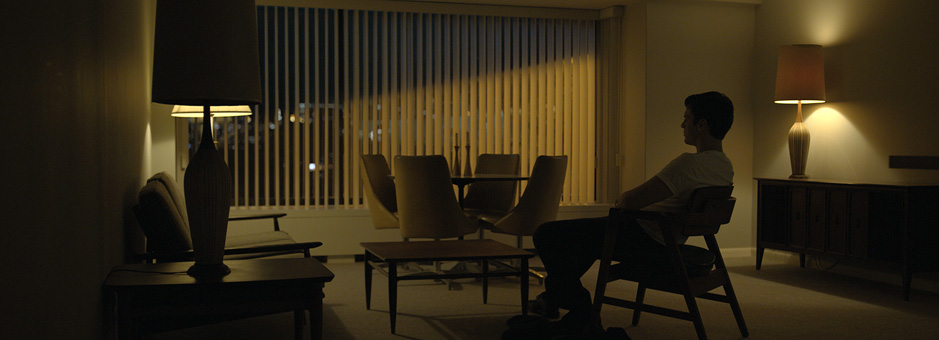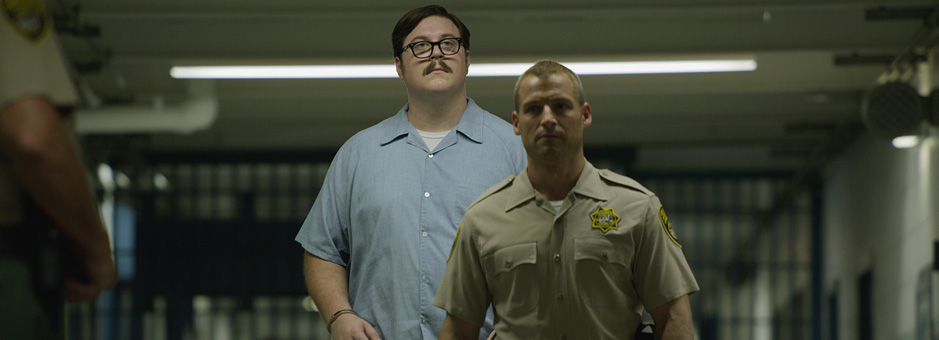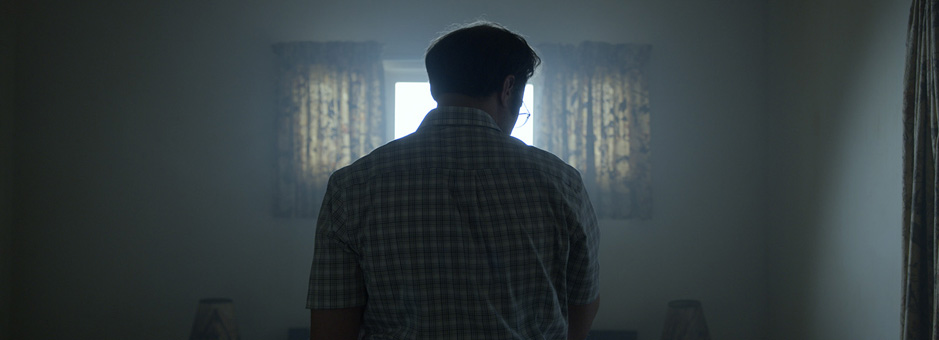Creating a unique HDR look for Mindhunter
A Q&A with producer Peter Mavromates and colourist Eric Weidt
The Netflix original series Mindhunter, from director David Fincher, has been delivered in 4K and Dolby Vision HDR (high dynamic range).
Co-produced by Peter Mavromates and graded by colorist Eric Weidt, it is set in the late 1970s, and sees two FBI agents expand criminal science by delving into the psychology of murder. Grading took place on the Baselight X color grading system from FilmLight, alongside editorial and VFX, in Fincher’s Hollywood finishing facility.
In this exclusive interview, Peter Mavromates and Eric Weidt tell us more about how they created the desired look for the series, their collaboration with the director, editorial and VFX, and much more...
What brought you to this new project and were there any unique challenges?
PM: I have worked with David Fincher on and off, mostly on, for 25 years. Mindhunter was simply the next chapter.
With David, there are no projects without challenges. This one was the first complete project on which color correction was done in-house. And add Dolby Vision HDR to that. And add to that, a post intensive look that David developed with Eric Weidt.
Mindhunter blends different flavors of high-tech including grading in Dolby Vision HDR first using a 1000-nit reference monitor. How did you approach the project from a technical standpoint?
PM: Since we are constantly trying something new on each project, we usually have co-conspirators. On Mindhunter, these were RED, Adobe, Dolby, and, of course, FilmLight. One of the things that defines Fincher’s work is its subtlety. As such, we wanted HDR, not to test the limits, but to take advantage of the increase in quality that HDR affords.
What was the collaboration like between you, David Fincher and the technical team on Mindhunter?
EW: The shoot and production took place in Pittsburgh, while the editorial, grading, and part of the VFX were done in-house in Hollywood. Color started about mid-way through the shooting schedule and David gave us notes remotely via PIX. Working alongside the editorial team offered huge advantages – I could receive new media and scenes on short notice and send graded material to the director pretty much at his whim. Editors could also come by to have a look at something they wanted to see or test.
Once the shoot had wrapped, David was back here in L.A., and that’s when grading really got serious. About 80% of the time, I was able to present scenes and episodes I’d already worked on and we’d take it from there. My approach was let each scene or location live as a “postcard” unto itself, and I think he was very open to the variety of what I put before him. His vision is very deep-seated and personal, and yet his vocabulary for describing it to you is second to none. I think the result is a universe that really bears his signature.
How much time did you spend on the project from start to end?
EW: From initial testing to final archiving, I was on this project for 16 months.
How was the look developed with the filmmakers? How did the material inspire you?
EW: The initial brief was for a low-contrast period piece set in the late 70’s, but with the stipulation to create something like an anamorphic lens feel, complete with barrel distortion and chromatic aberration. All of this was done in Baselight. We ended up feeding lens data into our conform XMLs so that the amount of distortion was based on the actual lens used for each shot. The brief also called for grain and gate-weave – so for efficiency, we had two Baselight scenes for every episode: one for color, the other for repositions and all of the lens treatments.
The film stocks and even television images produced in the 70’s seemed to channel everything into specific palettes. I especially love the rich grittiness (by today’s standards) of films produced in the early to mid-70’s – and this is something David and Stephen Nakamura had previously achieved brilliantly with Zodiac. David has an absolute devotion to consistency – meaning, once you’ve honed-in on a look for a particular scene, he will make you own it, checking every angle against a master shot, again and again. And in the end, that look will become truly compelling.
Can you tell us more about your collaborative process with other departments on that movie?
EW: Being in the same building, on the same network as editorial and VFX is simply amazing. Anybody can come and chat about technical issues, throw something up on the screen, and tackle issues in ways that web services just can’t address. This was the first grading project we did in-house, and it was really a beast that revealed itself over a period of months. We could test which tasks were more efficient to tackle in VFX or in DI, and the compositor could just come and have a pow-wow about, say, whether the grain on the titles typography should be baked-in and where is the best place to apply that.
What convinced you to choose to work with FilmLight?
PM: We first used Baselight on The Curious Case of Benjamin Button. That was about 10 years ago and it was the first time we felt that the DI process had finally matured. Our use of Baselight continued on House of Cards starting from Season 2 to the present.
Can you describe your experience using Baselight for Mindhunter?
EW: I was fortunate to be on a Baselight X system with Dolby Vision HDR – we had a 6K OpenEXR workflow, going out to a Dolby Pulsar, and with a Dolby PRM for the live Rec709 trim-pass. I graded right on the 6K EXRs, but mostly using half-res proxies in playback for efficiency, and masked out to our 5K center extraction. In grading, I could perform just about any task on the fly, track things in real-time and render out overnight.
You picked up Baselight only a short time before you started on Mindhunter. Are you still discovering new tools?
EW: I had graded four episodes of a previous Fincher project (Videosyncracy) in Baselight a couple of years ago - so I already knew this platform. But I have to say, the manuals are very well written for when you need to dig deeper, and the tech support at FilmLight is really the best of any I’ve ever had.
Some things you have to tackle on your own – for example, splitting the channels, giving them custom offset, doing a difference matte on one, and re-merging them is closer to what you’d be expected to do in NUKE – but it turns out, you can offer that (a “customized” chromatic aberration) as a solution right in DI.
What do you like most about Baselight and what tools were particularly beneficial?
EW: Baselight just feels like not only the strongest beast on the block, but also that it’s set up for viewing and grading multiple shots at once – being able to sort them, organize them in groups, call them up, compare them, and so on. Copying grades is really simple, and if you’re dreaming of some new way to do that, it’s pretty much already there. Also, I like how complicated things like nesting formats and masks within each other, or even making color-space decisions, are made simple in Baselight – really, you just spin the wheels and focus on the challenges of actual color grading.
You first graded the Dolby Vision HDR version of the series, then created other versions. Can you detail this specific HDR grade and how it impacted your work creatively and technically?
EW: The HDR presented some complexity. First, we were making a vintage show in a visual medium that didn’t exist at the time. Even for those who were alive back then, our sense of the era is constantly reinforced through the images that were produced contemporaneously – so our expectations would be of making the exact same images. Mindhunter is anchored in those tone-curves by choice, because David likes a kind of low-contrast detail – what he calls “suppleness”. But we managed to find just the right sweet spot, letting those HDR highlights bloom in the right ways, without affecting his overall vision. I think that the final result looks exactly the way it would if HDR had existed back then.
Any thoughts about the emergence of HDR in general, and why Dolby Vision was the best choice for this series?
EW: For Mindhunter, using Dolby Vision made the show more lifelike. Coupled with wider colour gamuts, HDR adds an amazing dimension to photography itself. Even if you’re used to treating raw images, you realize there’s all of this light that you’re not used to seeing – which creates a new relationship between light and dark. Certainly, it will be added to fast cutting and insane decibels in order to overload people’s senses. But in the right hands, I believe it can be used to augment the experience of any genre of cinema.
Peter Mavromates has served as a producer and post-production supervisor on multiple Fincher projects. He is the man behind the successful productions in the series ‘House of Cards’ and many Hollywood movies a such as ‘Fight Club’, ‘Gone Girl’, ‘Kill Bill: Vols. 1 & 2’, ‘Captain America: The First Avenger’, ‘Zodiac’ and many more.
Eric Weidt spent years working with renowned fashion photographers at Dtouch in Paris – transitioning from film scans to digital capture workflows, creating custom and film-emulation ICC profiles, and mastering cosmetics and grading work for stills photography and short films. His motion picture work for David Fincher includes roles as VFX artist (‘Gone Girl’), and Digital Intermediate Colorist (‘Videosyncracy’ and ‘Mindhunter’).
“With David, there are no projects without challenges. This one was the first complete project on which color correction was done in-house. And add HDR to that. And add to that, a post intensive look that David developed with Eric Weidt.”
Download








